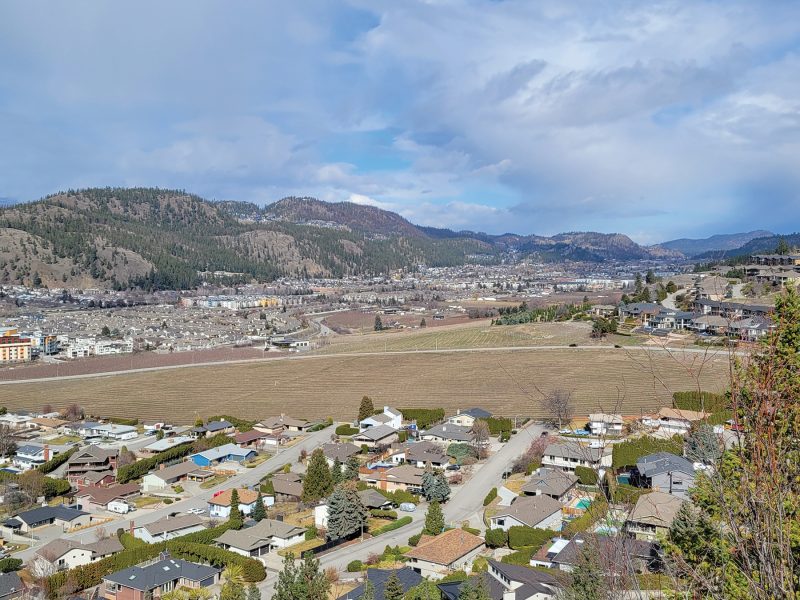KELOWNA – BC farmland values rose 11% last year, firmly reversing the decline posted in 2023.
The gains were driven in large part by the Okanagan, according to Farm Credit Canada’s annual survey of farmland values. Prices there soared nearly 25% to an average of $40,500 an acre, with sales tracked by FCC maxing out at $120,000 an acre.
“It’s always the case that location matters, but I would say location matters a great, great deal in BC more so than anywhere else,” says JP Gervais, chief economist at Farm Credit Canada.
While the region saw many orchard operations under pressure from extreme weather and low crop prices, Gervais said the data speaks for itself in terms of what was driving values last year.
“The numbers are driven, obviously, by the Okanagan,” he says.
Properties in the Peace ranked second in growth, with values rising 16% off a low base to $2,400 an acre, the lowest of any region in the province.
Values in the South Coast held steady, rising less than 1% to an average of $113,000 an acre, having borne the brunt of declines in last year’s survey with a 19% decline that made local farmland among the region’s worst-performing real estate.
Kootenay farmland fared the worst last year, with values dropping 11% to $21,500 an acre.
The decline reflected a broader malaise affecting the market last year, with overall market activity falling and many properties sitting on the market for longer.
This was the case in both the Okanagan, despite its strong performance, as well as the South Coast, where high values continue to put land out of reach of many buyers.
“Sales activity increased in early 2024 but slowed again in the latter half of the year. Listings sat longer with some sellers holding firm, still expecting to receive peak market values,” FCC said of the Okanagan, with a similar trend seen in certain areas of the Lower Mainland.
Nevertheless, falling interest rates last year also prompted some owners to bring properties forward.
“Demand for farmland near urban areas remained strong, with continued competition for part-time farming, rural residences and investment purposes,” FCC reported. “[Some] sections saw numerous properties entering the market, suggesting that sellers are anticipating a market recovery.”
Yet those on the ground indicate less robust trends.
While smaller acreages have seen strong demand, Bryan Van Hoepen of Century 21 Creekside Realty in Chilliwack said trends for commercial farm properties have held to a slower course.
“The smaller ones have been quite strong, but the smaller ones are really not farming,” he says. “Those numbers have been quite strong, but the actual commercial farming – the guys who actually have to make money off the land – those are the ones that have adjusted more, just with the changes in the market.”
While values in the Okanagan reported a dramatic increase, Van Hoepen is more cautious, based on his experience in the Fraser Valley.
Gains in the Okanagan were likely driven by activity in the central and southern portions of the valley, said Pat Duggan, a Vernon agent with Royal LePage Downtown Realty specializing in farm and ranch properties.
“As soon as you leave Vernon going south, prices get ridiculous,” he says.
He said larger parcels of irrigated land in the north Okanagan are selling in the range of $28,000 to $30,000, well below the regional average, though a 20-acre parcel might be close to $50,000 an acre.
Orchard land typically sells for more, but Duggan sold a 160-acre parcel for orchard development in Lumby last year for $15,000 an acre – again, reflective of the size and the need for capital expenses related to orchard development.
“You’re going to pay less in the Lumby area than you are in Armstrong-Enderby,” he adds.
While buyers have been cautious this year, Duggan doesn’t expect significant changes in values in 2025.
“Those prices will probably carry on at similar values,” he says.


 Tesche leaving BCFGA
Tesche leaving BCFGA